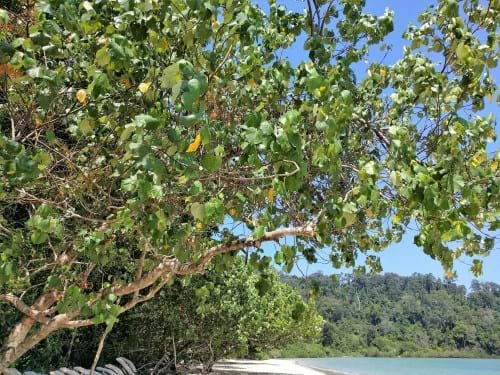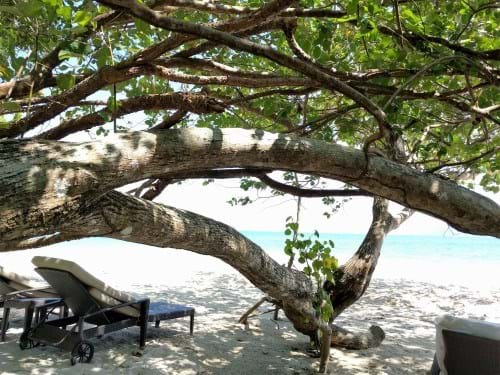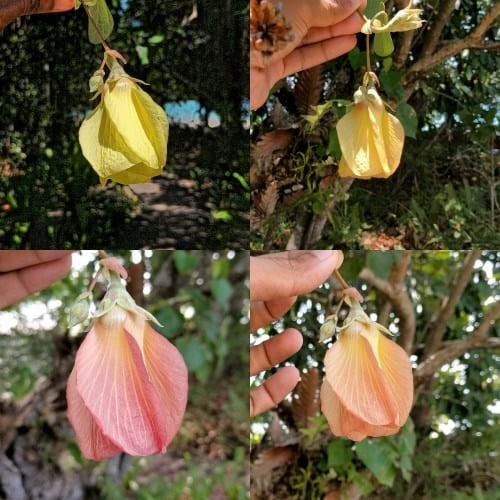Sea hibiscus
The beach in the Datai bay is blessed with a coastal forest in the backshore known as the littoral forest. Some trees bordering the backshore and the sandy beach play vital roles in nature, especially in the narrow area between the high tide mark and the backshore. This area is known as the swash zone and is where our sunbeds are strategically situated as the trees at the border of the littoral forest grow outwards to shade almost the full extent of the swash zone.
One of these natural shade providers is the sea hibiscus tree, Hibiscus tilliaceus. Easy to identify on resort grounds as the tree with heart-shaped leaves, this is a “hardy” species in terms of being able to thrive on many types of substrates like sand on our beach.

One of the sea hibiscus trees by Datai beach with heart-shaped leaves.
Like a few other trees growing at the border of the littoral forest, the sea hibiscus’ trunk or branch may grow into the sand and out again, like a sea serpent. This growth pattern holds the sand in place, decreasing the rate of, and sometimes even stopping the erosion of the beach at the swash zone where sediments are exchanged between the sea and land.

The trunk of the sea hibiscus tree growing into the sand of the swash zone providing shade to humans and slowing down the erosion of the beach that occurs mostly naturally on the Datai beach.
What makes this tree extra beautiful is the flower it produces. Like other hibiscus flowers, it has five petals, but the sea hibiscus’ flower does something special as the day gets later. The flower blooms in the morning, around 9AM, into a yellow flower. It then turns orange in the afternoon about 2PM. And when evening comes, the flower turns completely red, a little after 6PM, before dropping. (Though some red flowers do get to stay on the tree till next morning before they drop down.)

The colour change of the sea hibiscus’ flower in a day. Photos were taken in two-hour intervals from 11AM to 5PM, first picture starting at the top-left, and sequence continues clockwise.
The sea hibiscus, a beautiful, important, and useful tree.
Jonathan